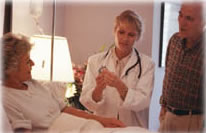


   |
| |
Vanadium - Benefits, Deficiency Symptoms And Food SourcesWhat is Vanadium?Vanadium is a trace mineral that is needed by the human body in small amounts. It is commonly found in vegetables and seafood. Vanadium is an ultra-trace mineral found in the human diet and the human body. In its natural form, Vanadium is very colorful and is found in very small amounts in a wide variety of foods. The vanadium is present in brain. The presence of it in the brain inhibits cholesterol from forming in blood vessels. Vanadium is also take part or is active in various chemical reactions that occur inside the body of human. It is believed to be involved in energy production, a cofactor of enzymes to accelerate chemical reactions in the body, participation in blood sugar and fat metabolism and in helping build bones and teeth. Uses and Benefits of Vanadium
Deficiency Symptoms of VanadiumChronic weight loss or gain, frequent urination and chronic thirst are common deficiency of vanadium. Deficiency of vanadium may cause cardiovascular and kidney disease, impaired reproductive ability, and increased infant mortality. Vanadium absorption is not easily done. The athletes may require this mineral more than the non athletes. Vanadium causes constriction of veins in the kidney and can alter the retention and excretion of sodium and chloride ions. The main symptoms of vanadium deficiency are:
Recommended Dosage of VanadiumThere is no established RDA for Vanadium. General recommendations are 20-30 mcg per day. There is not a lot of evidence on vanadium's toxicity although it's known to be highly toxic, and symptoms may include stunted growth, diarrhea, loss of appetite, even death. When taken in recommended dosages, vanadium has not been associated with any significant or bothersome side effects. At high dosages, vanadium has been known to cause stomach cramping and diarrhea as well as a green tongue.Rich Food Sources of VanadiumThe main food sources of vanadium are black pepper, shellfish, mushrooms, dill seed, parsley, soy, corn, olives, olive oil, and gelatin. Fish, dill, olives, meat, radishes, snap beans, vegetable oils, and whole grains are also good sources of vanadium. |
Family Doctor || Contact Us || Skin Disorders || Diabetes Care || Cellulite Guide || Chemotherapy ||
|
|
(c) Online-family-doctor.com All rights reserved
Disclaimer: Online-family-doctor.com is an information and educational purposes web site only. It is not intended to treat, diagnose, cure, or prevent any disease. Do not rely upon any of the information provided on this site for medical diagnosis or treatment. Please consult your primary health care provider about any personal health concerns. We will not be liable for any complications, or other medical accidents arising from the use of any information on this site.